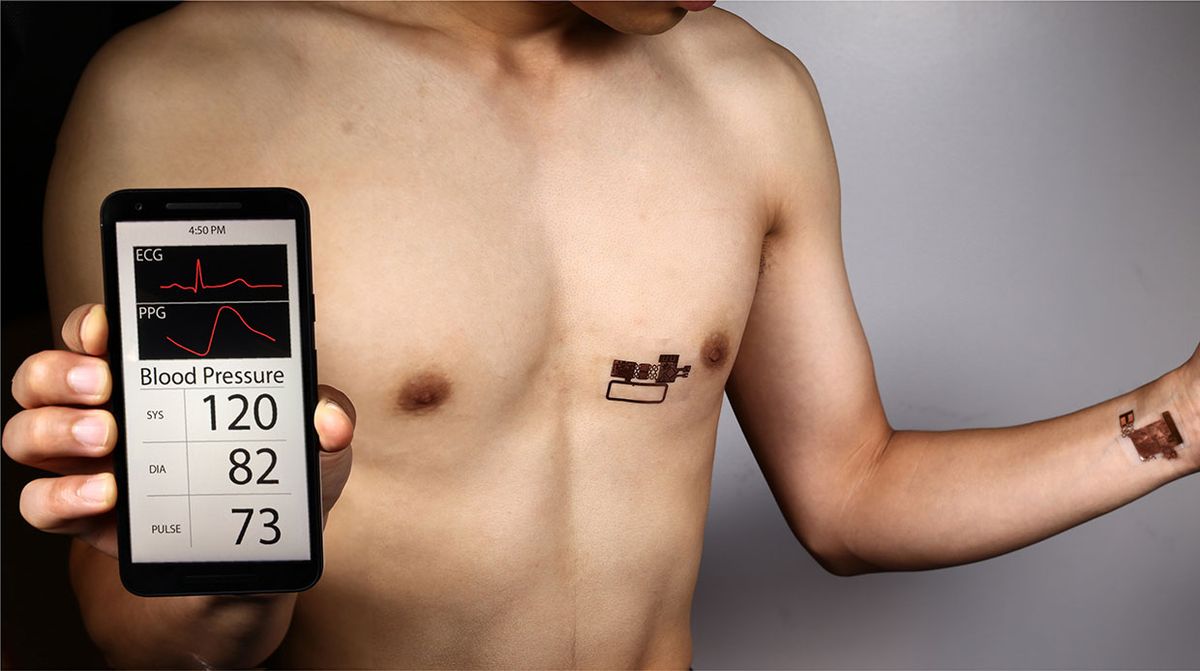Blood pressure is normally monitored using a cuff wrapped around the upper arm, but new research could one day lead to a cuffless, less intrusive way to measure blood pressure.
Blood pressure reflects both physical health and emotional states. Traditionally, doctors measure this vital sign using an inflating cuff that applies pressure against the arm to stop blood flow and slowly releases this outside pressure to help sensors detect the amount of pressure in the blood as it surges back into the arm.
Researchers would like to monitor the blood pressure of people while they are engaged in a variety of activities to help shed light on precisely how this vital sign fluctuates after exercise or mood swings. However, cuffs that repeatedly impede blood flow can damage the body over time, limiting how much data standard blood pressure monitors can gather. As such, doctors would prefer cuffless techniques for blood pressure monitoring.
One way to potentially eliminate the cuffs involves soft devices placed on the skin to measure the velocity of pulse waves inside arteries. Two equations can then convert these velocity measurements to blood pressure.
That strategy could also lead to a noninvasive method of continuous blood pressure monitoring, which is essential for the care of critically ill patients. Today, continuous blood pressure monitoring is typically accomplished by inserting a needle into an artery, an invasive technique that exposes patients to risks of dangerous complications.
“We realized that our unique skin-interfaced biophysical sensors could, potentially, address this challenge, but we found a lack of rigorous, physics-based models in the existing literature,” says study coauthor John Rogers, a materials scientist at Northwestern University, in Evanston, Ill.
Previous work found that one of the two equations for converting pulse-wave velocity to blood pressure relied on unrealistic assumptions that do not hold for human arteries. Among the debunked beliefs: Artery walls are essentially thin shells, and that artery thickness and diameter remain fixed as blood pressure changes. Moreover, although the other equation is based on both pulse-wave velocity and blood pressure data, there is no theoretical basis for how and why this equation works.
Now, Rogers and his colleagues have developed a model that does not rely on the assumptions used in previous equations. Their model can also provide a theoretical foundation for its linking of pulse-wave velocity with blood pressure. “The results help to establish the foundations for capabilities in continuous, cuffless blood pressure monitoring,” Rogers says. He and his collaborators detailed their findings in the 15 October edition of the journal Proceedings of the National Academy of Sciences.
The new model takes into account the actual shape of human arteries, and also accounts for their elasticity. The scientists tested their model two ways: with artificial blood vessels made of thin-walled tubes of silicone rubber, and with sensors placed on the skin of human volunteers. They noted that their model was far more accurate than previous equations at measuring blood pressure.
The scientists are now deploying devices and algorithms based on their new model “to studies of blood pressure on human patients in the ICU who have arterial lines for measuring blood pressure,” Rogers says. “These studies will help to further establish the practical utility of our findings.”
Charles Q. Choi is a science reporter who contributes regularly to IEEE Spectrum. He has written for Scientific American, The New York Times, Wired, and Science, among others.



